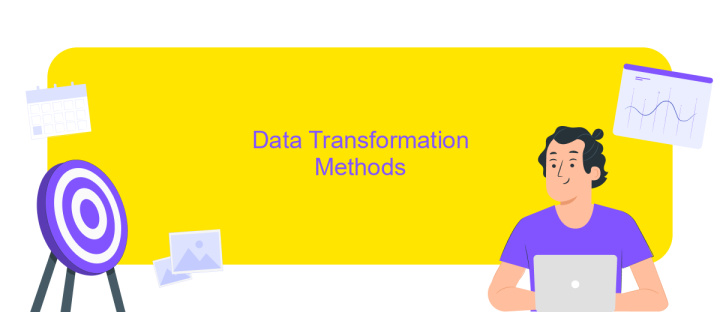Data Integration Full Stack
Data Integration Full Stack is a comprehensive approach to managing and harmonizing data from diverse sources across an organization. By leveraging a full stack solution, businesses can streamline data processes, enhance accuracy, and foster better decision-making. This article explores the key components, benefits, and implementation strategies of a full stack data integration system, providing insights into its transformative potential.
Introduction
Data Integration Full Stack is a comprehensive approach to managing and unifying data from diverse sources, enabling seamless access, transformation, and analysis. It encompasses various technologies and methodologies to ensure that data is reliable, consistent, and accessible for decision-making processes. By integrating data from multiple systems, organizations can gain a holistic view of their operations and drive more informed business strategies.
- Data Extraction: Collecting data from different sources such as databases, APIs, and flat files.
- Data Transformation: Cleaning, normalizing, and structuring data to ensure consistency and usability.
- Data Loading: Transferring the transformed data into a central repository or data warehouse.
- Data Governance: Implementing policies and procedures to ensure data quality and security.
- Data Visualization: Creating dashboards and reports for data analysis and insights.
Implementing a full stack data integration solution can significantly enhance an organization's ability to make data-driven decisions. It streamlines the process of data management, reduces redundancy, and ensures that accurate and timely information is available to stakeholders. As a result, businesses can respond more swiftly to market changes and optimize their operations for better performance.
Data Extraction Techniques

Data extraction is a crucial step in the data integration process, enabling the collection of relevant data from various sources. Techniques for data extraction vary depending on the source and the type of data. Common methods include web scraping, where automated tools are used to extract data from websites, and API integration, which allows for the seamless transfer of data between different software applications. SQL queries are another popular technique, especially for extracting data from relational databases. Each method has its own set of challenges and benefits, making it essential to choose the right approach based on the specific requirements of the integration project.
For those looking to simplify the data extraction process, services like ApiX-Drive offer powerful solutions. ApiX-Drive provides a user-friendly platform for setting up integrations without requiring extensive coding knowledge. It supports a wide range of data sources and offers real-time data synchronization, ensuring that your data is always up-to-date. By leveraging such services, businesses can streamline their data extraction workflows, reduce manual effort, and focus on deriving actionable insights from their integrated data.
Data Transformation Methods

Data transformation is a critical step in the data integration process, enabling disparate data sources to be converted into a unified format. This ensures consistency and usability across various systems and applications. Effective transformation methods can significantly enhance data quality and facilitate better decision-making.
- Data Cleansing: This involves identifying and correcting errors and inconsistencies in the data to ensure it is accurate and reliable.
- Data Normalization: This process converts data into a standard format, removing redundancies and ensuring uniformity.
- Data Aggregation: This method combines data from multiple sources to provide a comprehensive view, often used for reporting and analysis.
- Data Enrichment: This adds additional information to the data, enhancing its value and context for better insights.
- Data Filtering: This involves selecting relevant data based on specific criteria, ensuring only useful information is processed and analyzed.
Each of these methods plays a vital role in transforming raw data into meaningful and actionable insights. By applying these techniques, organizations can ensure their data is accurate, consistent, and ready for analysis, ultimately leading to more informed business decisions.
Data Loading Strategies

Data loading is a critical phase in the data integration process, ensuring that data from various sources is accurately and efficiently transferred into a target system. This step requires careful planning and execution to maintain data integrity and minimize downtime. Different strategies can be employed based on the specific needs and constraints of the project.
One common approach is batch loading, where data is collected and processed in large chunks at scheduled intervals. This method is suitable for scenarios where real-time updates are not crucial. On the other hand, real-time loading involves continuous data transfer, providing up-to-date information and supporting time-sensitive applications.
- Batch Loading: Suitable for non-time-sensitive data, processed in large chunks.
- Real-Time Loading: Continuous data transfer, ideal for time-sensitive applications.
- Incremental Loading: Only new or updated data is transferred, reducing load times.
- Full Reload: All data is reloaded, often used for initial loads or major updates.
Choosing the right data loading strategy depends on various factors, including the volume of data, the frequency of updates, and the specific requirements of the target system. By carefully evaluating these factors, organizations can ensure efficient and reliable data integration processes.


Challenges and Best Practices of Data Integration
Data integration poses several challenges, including data inconsistency, data silos, and complex data transformations. Ensuring data quality and accuracy across disparate sources can be difficult, especially when dealing with real-time data. Additionally, maintaining data security and compliance with regulations such as GDPR adds another layer of complexity. To address these challenges, organizations must adopt robust data governance frameworks and invest in tools that facilitate seamless data integration.
One best practice is to use automated data integration platforms like ApiX-Drive, which streamline the process of connecting various data sources and applications. These platforms offer pre-built connectors and user-friendly interfaces, reducing the need for extensive coding. Another essential practice is to implement data validation and cleansing procedures to ensure data integrity. Regularly monitoring and updating integration workflows can also help in maintaining data accuracy and reliability. By leveraging these best practices, organizations can achieve efficient and secure data integration, ultimately driving better business outcomes.
FAQ
What is Data Integration Full Stack?
Why is data integration important for businesses?
What are the common challenges in data integration?
How can businesses automate data integration processes?
What role does real-time data integration play in modern businesses?
Routine tasks take a lot of time from employees? Do they burn out, do not have enough working day for the main duties and important things? Do you understand that the only way out of this situation in modern realities is automation? Try Apix-Drive for free and make sure that the online connector in 5 minutes of setting up integration will remove a significant part of the routine from your life and free up time for you and your employees.

